Many of the so-called "weeds” in your garden might actually be totally safe - and tasty! - to eat.
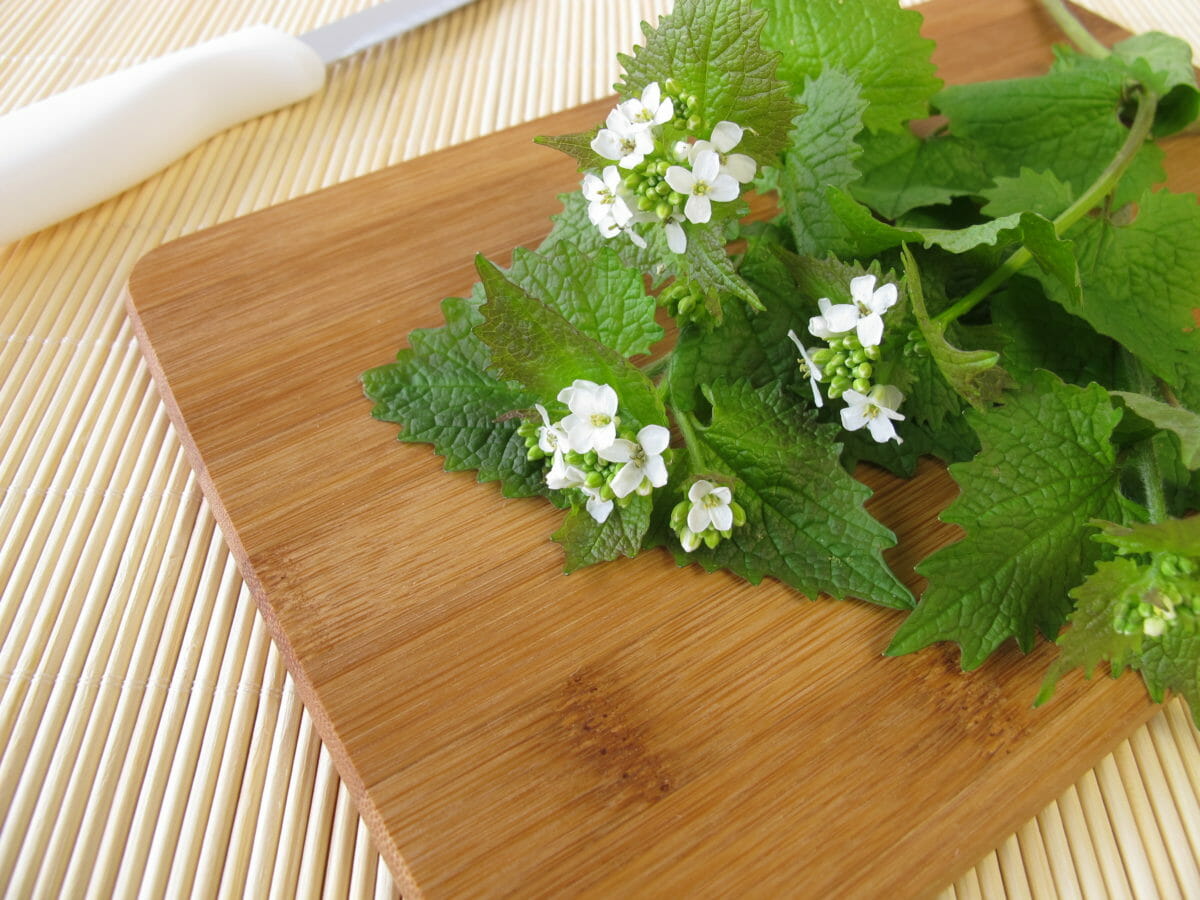
We may not realize it, but an unkempt, uncultivated backyard is often full of food, especially edible greens. Many are in fact feral cousins of gourmet crops, and they typically pack more nutrients per leaf than their cultivated kin. They are almost always more potent in flavor. You likely have a few of the following species growing in your backyard already*. Let’s learn more
*The species listed here are fairly easy to identify and are unlikely to be confused with toxic species that have a similar appearance. Still, never eat a plant unless you are 100 percent sure of its identity.
Dandelion (Taraxacum officinale)
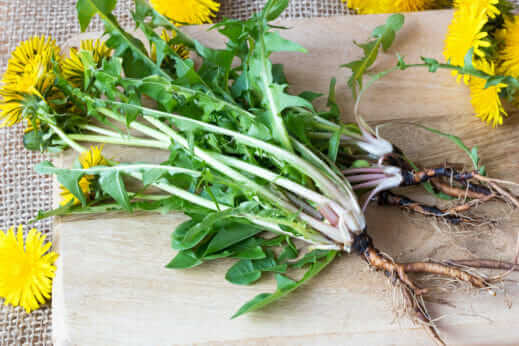
By Madeleine Steinbach / shutterstock.com
This homely plant is extraordinarily difficult to eradicate, but easy to harvest. The leaves, roots, and even the flowers all have myriad edible and medicinal uses. But the most straightforward one is to simply pluck the small leaves found at the center of a dandelion clump (these are most tender and least bitter), chop finely and sprinkle them in salads, to which they add a delightfully tangy flavor. The yellow petals make a nice garnish.
Purslane (Portulaca oleracea)
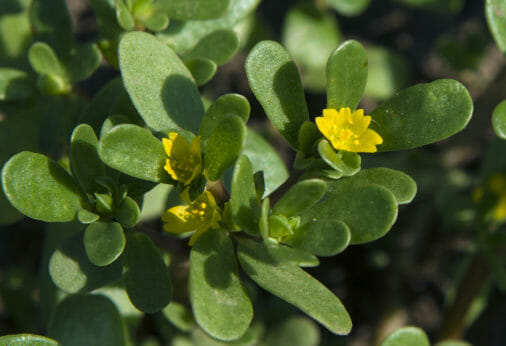
By Volodymyr Nikitenko / shutterstock.com
The thick teardrop-shaped leaves of this weed have an unusual succulent, mucilaginous texture, like a cross between spinach and okra. Purslane’s mild taste balances out the stronger flavors of many other weed species when mixed together in a salad.
Sheep Sorrel (Rumex acetosella)
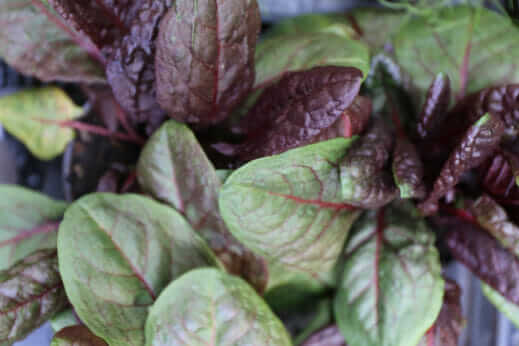
By BOULENGER Xavier / shutterstock.com
This weed is closely related to French sorrel, a gourmet green with a famously tangy flavor. The arrow-shaped leaves of sheep sorrel are nearly identical in taste, though they are much smaller and have a slightly bitter edge. You wouldn’t want to eat a salad comprised only of this plant, but chopped finely it is a delicious ingredient.
Curly Dock (Rumex crispus)
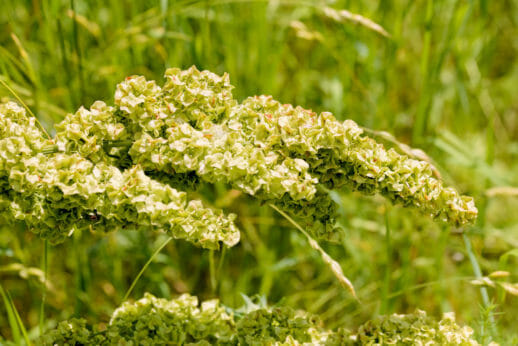
By Maxal Tamor / shutterstock.com
Another tangy relative of French sorrel, the leaves of curly dock are much larger than sheep sorrel. They are also tougher, so be sure to harvest the younger ones and use sparingly in salads.
Wood Sorrel (Oxalis spp.)
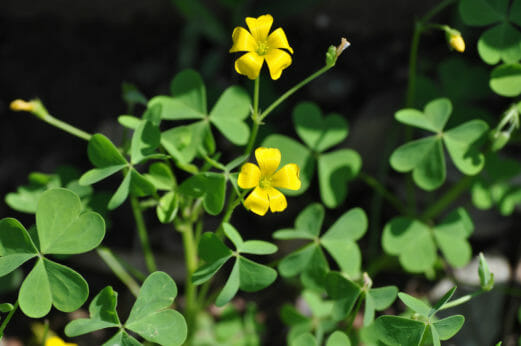
By Barbara MacDonald / shutterstock.com
Despite the name, this plant is not related, botanically speaking, to other sorrels. But it shares a similar tangy flavor. It differs in texture, however, with soft, almost succulent leaves.
Lamb’s Quarters (Chenopodium album)

By Ana Gratys / shutterstock.com
This is one of the most common garden weeds, and one of the most palatable. They make a fine spinach substitute in salads. Lamb’s quarters can grow head-high, but the leaves are most tender on plants that come no higher than your knee.
Chickweed (Stellaria media)
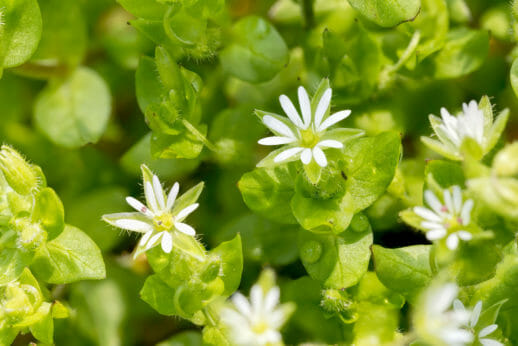
By Maxal Tamor / shutterstock.com
The leaves are tiny on this twining, sprawling plant, so you’ll want to harvest whole clumps, stems and all, for salads. Chickweed is one of the few weeds that can match baby lettuce in its tenderness and neutral flavor.
Plantain (Plantago spp.)
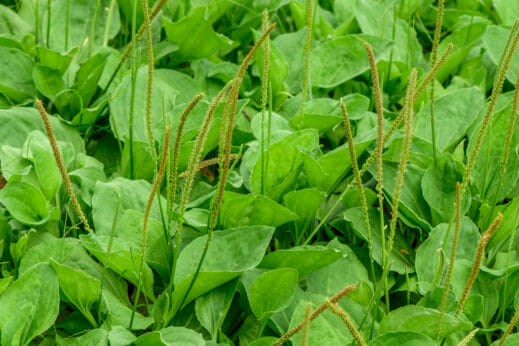
By pisitpong2017 / shutterstock.com
Somewhat thick and chewy, plantain leaves must be used sparingly in salads. Select the smallest, most tender ones and chop them finely. They are fairly neutral in flavor but packed with nutrients.
Garlic Mustard (Alliaria petiolata)
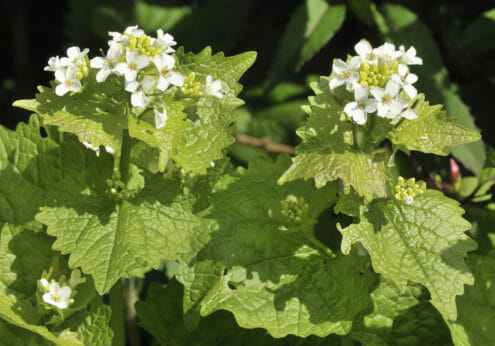
By Martin Fowler / shutterstock.com
This weed tastes like mustard greens (to which it is related), with a hint of, you guessed it, garlic. Harvested when young, the leaves are reasonably tender – though if the plants grow up tall and produce flowers, you can eat those, too.
Violets (Viola spp.)
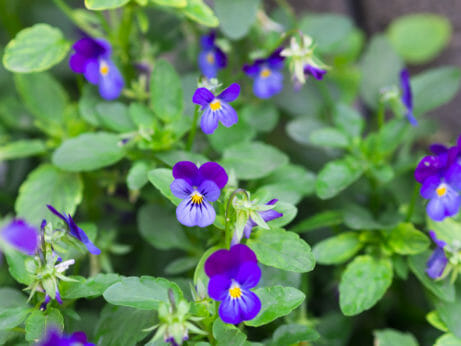
By vesna cvorovic / shutterstock.com
The leaves of all violets and violas are edible, including the tiny weedy ones that often invade lawns and gardens. The dainty flowers are tasty, too.
If there are food shortages, this is likely to come in very handy.
Didn’t know weeds were so good for you
Purslane is the terrestrial plant with the most omega3 fatty acids
(That is very good). Wood sorrel has to be eaten in small quantities if you are prone to have kidney stones( specially do not mix it with creamy dressings with dairy).
Where can I send a photo to identify my weeds?
Thank goodness I listened to my great grandma when I was a child and remembered her stories of eating edible plants. She said it helped her to survive the depression era.
I live in Brooklyn New York And I Have found most of these weeds in my dard. The plantain, the chiquied, the wild Violet Are really nutritious . I often wash them and put them in my smoothies in the morning, And they help regulate my digestive system et cetera. Very important to know about these in case there’s ever a shortage in food Which I have read is possible. It never hurts to know about these thanks, and Unless people spray their lawns for other weeds, than those weeds are not sprayed and therefore are organic
Is there an app perhaps to identify names of weeds/flowers
Love the lambs quarters
FL. has lots of dollar weed, is it edible
leedle leedle leedle lee